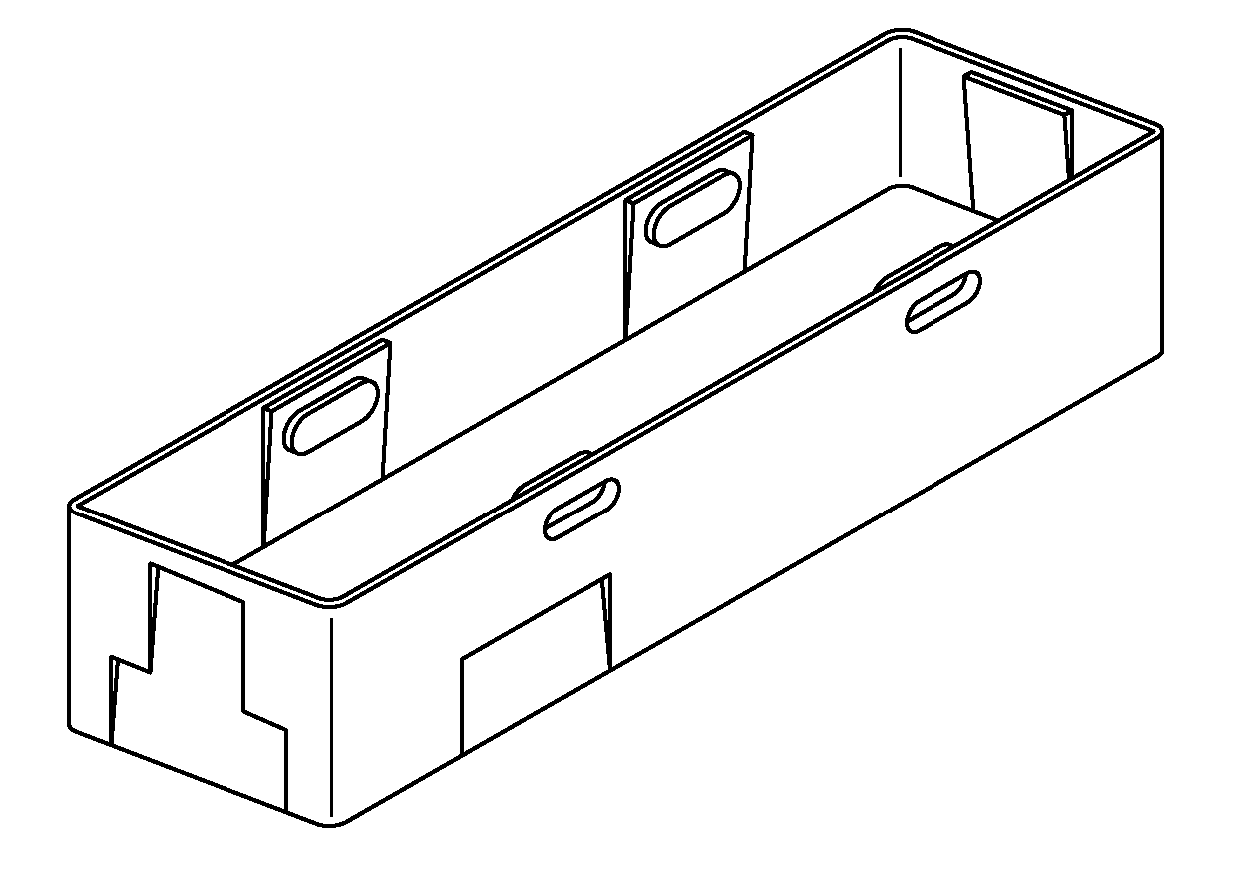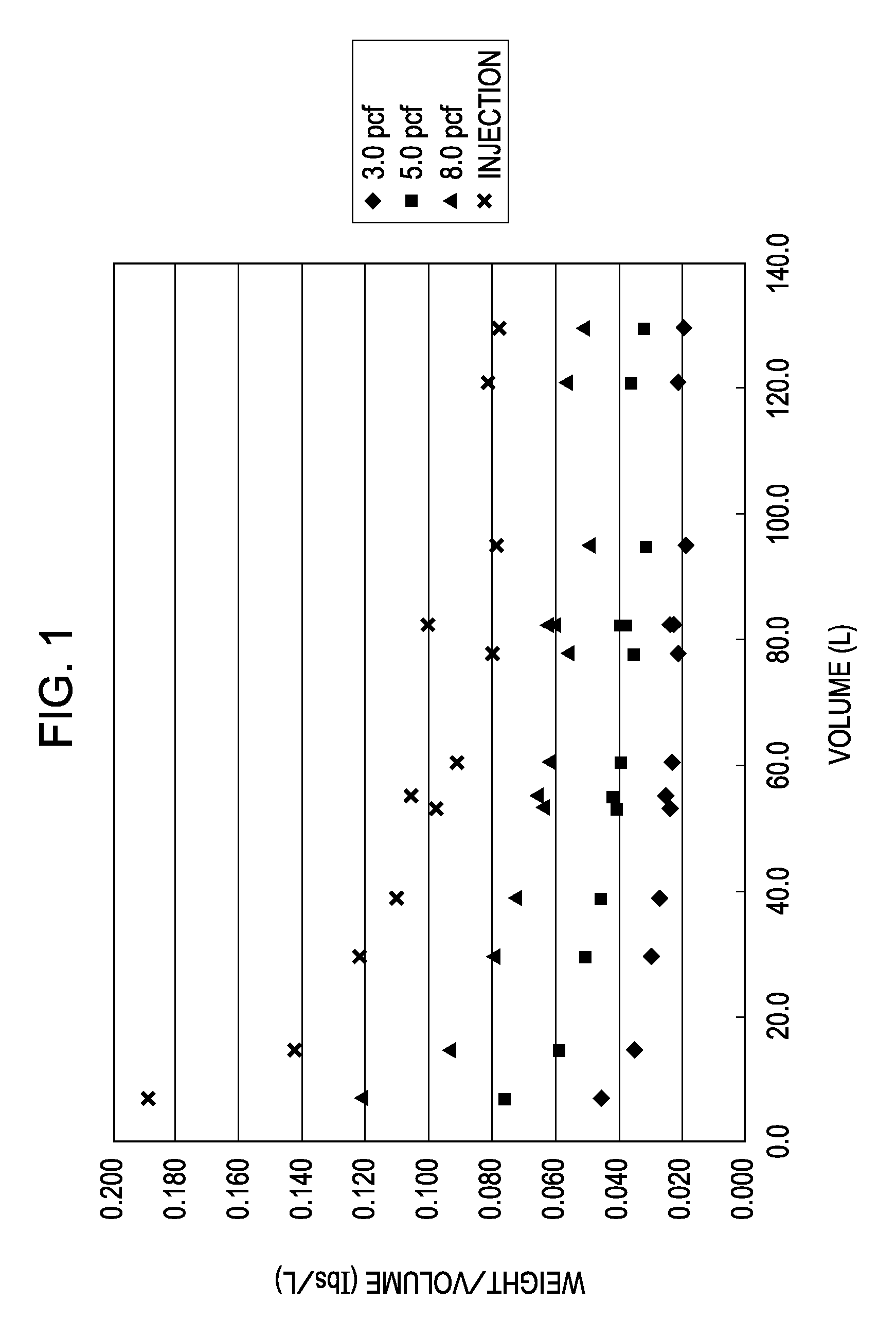Method of transporting parts and expanded foam returnable container
- Summary
- Abstract
- Description
- Claims
- Application Information
AI Technical Summary
Benefits of technology
Problems solved by technology
Method used
Image
Examples
example 1
[0100]A mixture obtained by dry blending 500 ppm of talc and 1,500 ppm of calcium stearate into an ethylene-propylene random copolymer with a melting point of 146° C. and a MFR of 8 g / 10 min was fed into a 58-mm twin-screw extruder, followed by melting and kneading, and the resulting mixture was extruded into strands through a die plate having a plurality of holes with a diameter of 2.2 mm. The extruded strands were cooled by passing through a water tank, and then cut into cylindrical pellets having a particle weight of 1.2 mg and L / D of 3.2 by a pelletizer. An autoclave-type pressure-resistant container was charged with 100 parts by weight of the pellets, 150 parts by weight of water, 1.4 parts by weight of tricalcium phosphate, 0.035 parts by weight of sodium n-paraffin sulfonate, and isobutane in the amount shown in Table 1. The mixture was heated under stirring and retained at the temperature shown in Table 1. Then, isobutane was injected into the container, and the internal pre...
example 2
[0103]Using the expanded particles of Reference Example 1 shown in Table 1, a returnable container with dimensions of 1,422 mm (56.0 inches) in length, 378 mm (14.9 inches) in width, and 382 mm (15.0 inches) in height was molded by the counter pressure molding process using water vapor at 0.34 MPa, as shown in FIGS. 3 to 8. By adjusting the air pressure during the counter pressure molding, the molded article was formed so as to have a density of 80 g / L (compression ratio of 1.6). Two through-holes were formed in each of the sidewalls extending in the longitudinal direction (four through-holes in total) using a hot cutter, and then reinforcing members composed of non-expanded polypropylene were inserted onto the peripheral surfaces of the through-holes and fixed with screws. Thereby, finger insertion through-holes were formed. In each through-hole, the distance between the upper end of the returnable container and the upper end of the opening was 34 mm, and the distance between the u...
example 3
[0104]Using the expanded particles of Reference Example 2 shown in Table 1, a returnable container with dimensions of 572 mm (22.5 inches) in length, 457 mm (18 inches) in width, and 368 mm (14.5 inches) in height was molded by the counter pressure molding process using water vapor at 0.34 MPa, as shown in FIGS. 9 to 12. By adjusting the air pressure during the counter pressure molding, the molded article was formed so as to have a density of 60 g / L (compression ratio of 1.7). By incorporating a finger insertion portion structure into the mold, finger insertion portions were formed during the molding. The thickness b between the upper surface al of the finger insertion portion and the upper end 1 of the returnable container was set at 47 mm, and the length c from the upper end 1 to the finger insertion portion was set at 80 mm.
PUM
| Property | Measurement | Unit |
|---|---|---|
| Weight | aaaaa | aaaaa |
| Thickness | aaaaa | aaaaa |
| Thickness | aaaaa | aaaaa |
Abstract
Description
Claims
Application Information
 Login to View More
Login to View More - Generate Ideas
- Intellectual Property
- Life Sciences
- Materials
- Tech Scout
- Unparalleled Data Quality
- Higher Quality Content
- 60% Fewer Hallucinations
Browse by: Latest US Patents, China's latest patents, Technical Efficacy Thesaurus, Application Domain, Technology Topic, Popular Technical Reports.
© 2025 PatSnap. All rights reserved.Legal|Privacy policy|Modern Slavery Act Transparency Statement|Sitemap|About US| Contact US: help@patsnap.com



